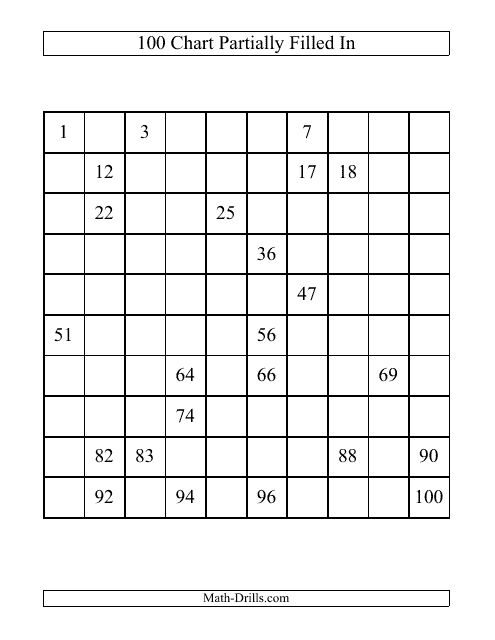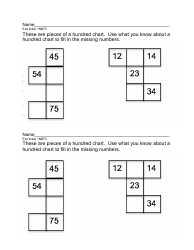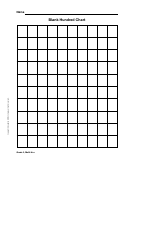Hundreds Chart Partially Filled in
A hundreds chart is partially filled in to help children practice counting, identifying number patterns, and understanding number relationships. It is a visual tool used in math education.
The teacher or the student files the hundreds chart partially filled in.
FAQ
Q: What is a hundreds chart?
A: A hundreds chart is a grid with 10 rows and 10 columns, filled with numbers from 1 to 100.
Q: What does it mean for a hundreds chart to be partially filled in?
A: A partially filled in hundreds chart means that some of the numbers have already been filled in, while others are left blank.
Q: Why is a hundreds chart used?
A: A hundreds chart is used to help with counting, number recognition, and understanding number patterns.
Q: What can you do with a partially filled in hundreds chart?
A: With a partially filled in hundreds chart, you can practice filling in the missing numbers, identifying number patterns, and counting.
Q: How do you fill in a partially filled in hundreds chart?
A: To fill in a partially filled in hundreds chart, you can follow the existing pattern or count sequentially from the previous number.
Q: What are some number patterns that can be observed on a hundreds chart?
A: Some number patterns that can be observed on a hundreds chart include counting by ones, twos, fives, and tens, as well as diagonal, horizontal, and vertical patterns.
Q: What is the significance of a hundreds chart?
A: A hundreds chart helps develop number sense, improves mathematical understanding, and enhances arithmetic skills.
Q: Is a hundreds chart only used for counting up to 100?
A: No, a hundreds chart can be used for counting up to any number, depending on the size of the chart and the numbers it contains.



